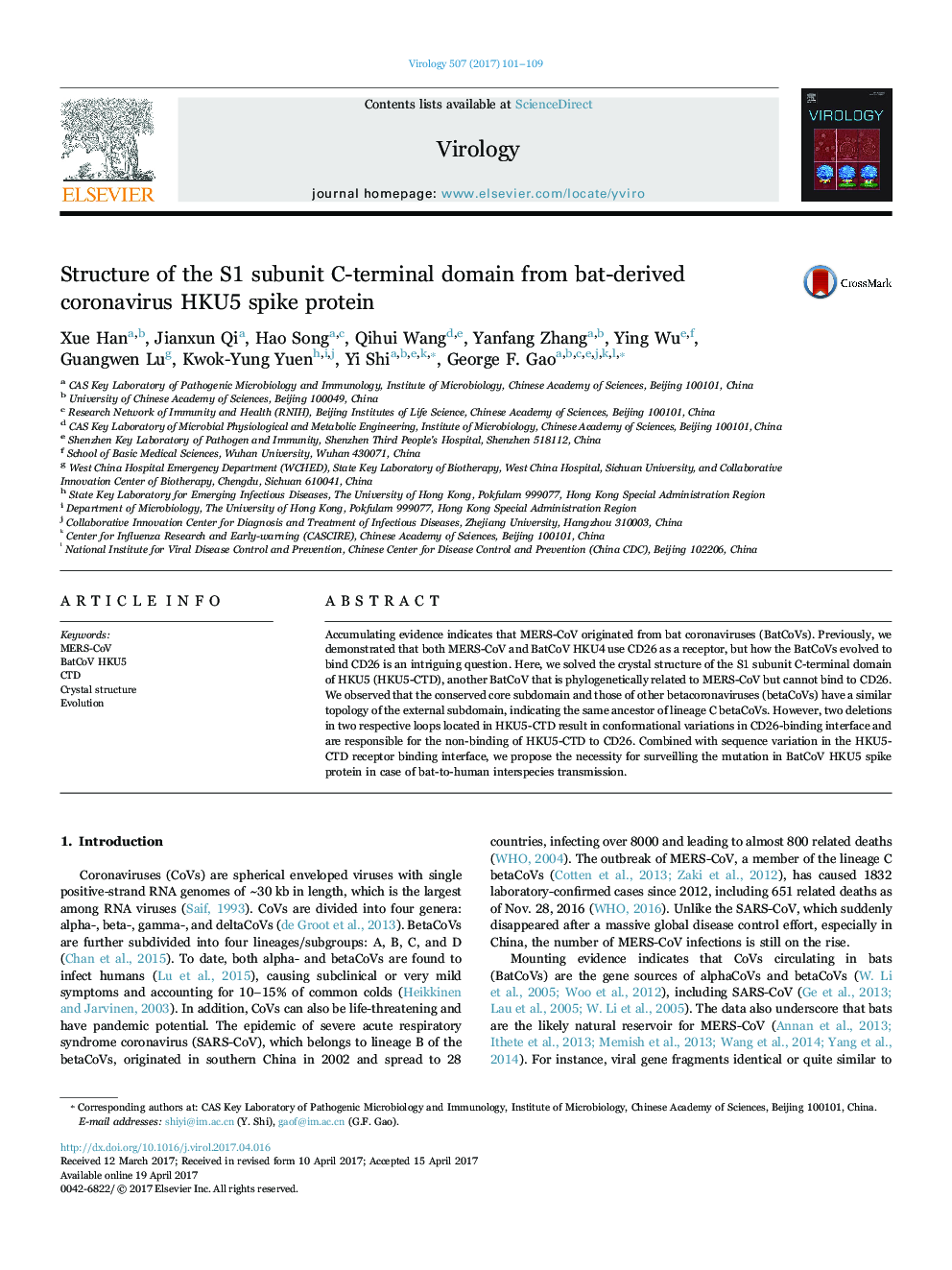| Article ID | Journal | Published Year | Pages | File Type |
|---|---|---|---|---|
| 5674964 | Virology | 2017 | 9 Pages |
â¢Structure of the S1 subunit C-terminal domain (CTD) from bat-derived coronavirus HKU5 spike protein at 2.1 à .â¢Identification of features of HKU5-CTD that response to non-binding to CD26.â¢Variations in the HKU5-CTD receptor binding interface indicate the need for surveillance.
Accumulating evidence indicates that MERS-CoV originated from bat coronaviruses (BatCoVs). Previously, we demonstrated that both MERS-CoV and BatCoV HKU4 use CD26 as a receptor, but how the BatCoVs evolved to bind CD26 is an intriguing question. Here, we solved the crystal structure of the S1 subunit C-terminal domain of HKU5 (HKU5-CTD), another BatCoV that is phylogenetically related to MERS-CoV but cannot bind to CD26. We observed that the conserved core subdomain and those of other betacoronaviruses (betaCoVs) have a similar topology of the external subdomain, indicating the same ancestor of lineage C betaCoVs. However, two deletions in two respective loops located in HKU5-CTD result in conformational variations in CD26-binding interface and are responsible for the non-binding of HKU5-CTD to CD26. Combined with sequence variation in the HKU5-CTD receptor binding interface, we propose the necessity for surveilling the mutation in BatCoV HKU5 spike protein in case of bat-to-human interspecies transmission.
